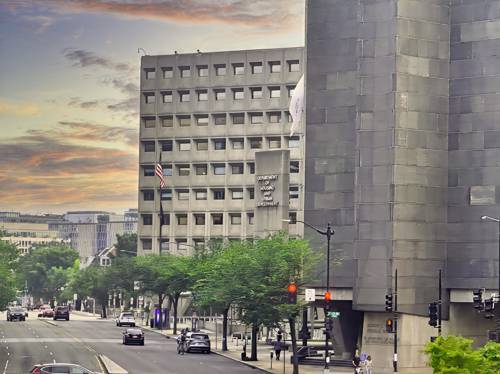
FAQ About The Influence of Outsider Architecture on Urban Development

What is outsider architecture?
Outsider architecture refers to unconventional and non-traditional building styles that often reflect personal, artistic, or visionary concepts rather than aligning with common architectural norms. These designs can challenge the status quo, offering unique and individualized structures that may incorporate a variety of materials and forms.

How does outsider architecture influence urban development?
Outsider architecture can significantly influence urban development by introducing innovative concepts and challenging traditional building norms. It encourages diversity in cityscapes, promotes creative uses of space, and often inspires mainstream architects to rethink conventional urban design strategies.

Can you provide examples of outsider architecture?
Examples of outsider architecture include Antoni Gaudí's Sagrada Família in Barcelona, which incorporates organic forms and elaborate details. Another example is the Watts Towers in Los Angeles, created by Simon Rodia using found objects and unusual building techniques. These structures exemplify the personal vision and artistic freedom associated with outsider architecture.

What are the key characteristics of outsider architecture?
Key characteristics of outsider architecture include unconventional forms, the use of non-traditional materials, and a strong emphasis on personal or artistic expression. These buildings often stand out in their environments due to their unique design and creative use of space.

Why is outsider architecture important for a city?
Outsider architecture is important for a city as it fosters architectural diversity and cultural richness. It encourages artistic expression and innovation in urban settings, which can lead to more vibrant and dynamic communities. Additionally, these structures often attract tourists and enhance the cultural reputation of a city.

How do urban planners deal with outsider architecture?
Urban planners may approach outsider architecture with a focus on integrating unique structures into the broader cityscape in a way that respects both individual creativity and public interests. They may work on finding a balance between preserving the unique artistic value of these buildings and ensuring they comply with safety and zoning regulations.

Are there any regulations regarding outsider architecture?
Yes, like any architectural project, outsider architecture is subject to local building codes and regulations, which may include zoning laws, safety standards, and aesthetic guidelines depending on the locality. These regulations aim to ensure that all structures, regardless of style, are safe and functional.

How can outsider architecture contribute to sustainable urban development?
Outsider architecture can contribute to sustainable urban development by incorporating eco-friendly designs and materials. Many outsider architects prioritize sustainability, using recycled or locally sourced materials and designing energy-efficient structures. These practices can reduce environmental impact and promote long-term urban resilience.

What challenges do cities face when incorporating outsider architecture?
Cities may face several challenges including regulatory compliance, public acceptance, and integration with existing urban landscapes. Ensuring that these unique projects meet safety standards while maintaining their creative integrity can be complex. Additionally, balancing public perception with innovative design requires careful planning and community engagement.

What is the history of outsider architecture?
Outsider architecture has roots in visionary and self-taught art movements, often associated with individuals who design and build unconventional structures outside the mainstream architectural canon. Throughout history, these buildings have served as artistic statements, reflecting personal narratives or creative visions, such as Gaudí’s work in the late 19th and early 20th centuries.

Are there famous architects known for outsider architecture?
Yes, some famous figures include Antoni Gaudí, known for his uniquely organic and intricate designs in Barcelona, and Friedensreich Hundertwasser, whose colorful and unconventional buildings break from traditional architectural forms. These architects are celebrated for their visionary contributions to the field of outsider architecture.

How does outsider architecture affect property values?
The impact of outsider architecture on property values can vary. In some cases, unique and artistic structures can attract interest, enhancing nearby property values due to increased tourism and cultural appeal. However, if a structure is too unconventional or does not adhere to neighborhood aesthetics, it could potentially have an adverse effect.

Can outsider architecture be integrated into residential areas?
Yes, outsider architecture can be integrated into residential areas, offering diversity in housing options and contributing to a neighborhood’s cultural richness. However, integration may require careful consideration of community aesthetics and adherence to local building regulations to ensure harmonious urban development.

What role does technology play in outsider architecture?
Technology plays a critical role in outsider architecture by facilitating innovative construction techniques and the use of cutting-edge materials. Technologies such as 3D printing and computer-aided design (CAD) allow for more complex and personalized architectural creations, enhancing creativity while ensuring structural integrity.

How does outsider architecture compare to traditional architecture?
Outsider architecture differs from traditional architecture in its emphasis on individual artistic expression over adherence to conventional design norms. While traditional architecture often prioritizes functionality, predictability, and the integration into existing urban grids, outsider architecture focuses on creativity, unusual forms, and materials.

What are the cultural impacts of outsider architecture?
Outsider architecture can have significant cultural impacts by encouraging diversity and artistic expression within urban environments. It challenges conventional aesthetics, fosters dialogue about space use, and contributes to a city’s unique identity, often becoming landmarks that celebrate cultural vitality and innovation.

How can communities support outsider architecture projects?
Communities can support outsider architecture projects by fostering an inclusive environment that values unique artistic expressions. This may involve supporting zoning allowances, participating in community dialogues about urban aesthetics, and promoting awareness of the cultural contributions these projects provide.

Is outsider architecture a growing trend globally?
Yes, outsider architecture is gaining traction globally as more cities embrace innovative and sustainable urban design. As environmental concerns and creative diversity take center stage, cities are increasingly open to structurally and aesthetically unique projects that challenge traditional views.

What is the future of outsider architecture in urban design?
The future of outsider architecture in urban design is likely to be characterized by growing acceptance and integration into mainstream urban planning, driven by a desire for sustainable and culturally diverse environments. Continued advancements in technology and materials are expected to further enhance creative possibilities.
